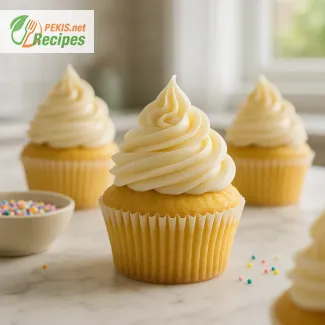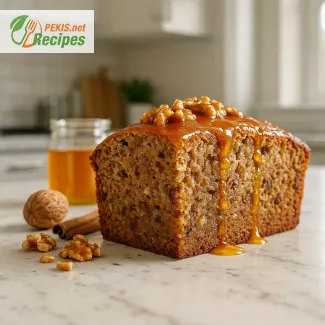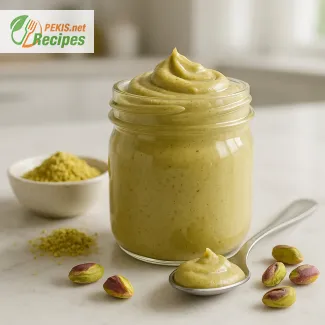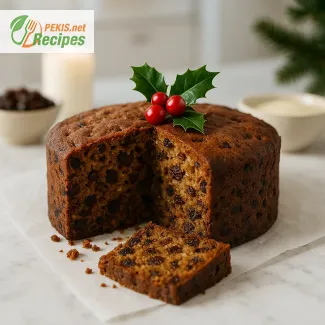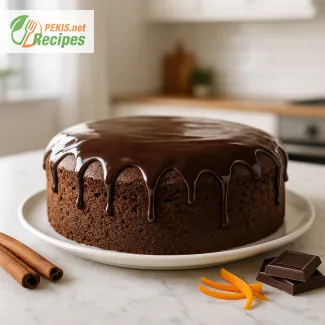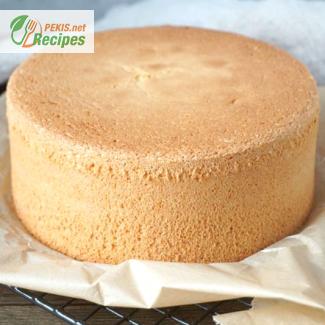
When it comes to the foundation of any elegant, memorable cake, nothing quite compares to a perfectly crafted biscuit layer. The best biscuit for cake – a harmonious blend of texture, flavor, and lightness – is that silent hero which transforms a dessert into an unforgettable experience. Unlike typical sponge cakes, a high-quality biscuit (often based on a classic génoise or ladyfinger-style foundation) is a canvas that not only complements but elevates flavors, adding dimension to each bite without overwhelming the delicate notes of creams, mousses, or fruits layered above.
To understand what makes the best biscuit for cake, it's essential to consider a few primary elements: structure, taste, and versatility. A biscuit needs a balanced structure, offering enough sturdiness to support layers of filling while remaining tender and yielding under a fork. Achieving this balance is a testament to the biscuit’s artful preparation: a well-whipped batter that’s folded just right, allowing for tiny bubbles to form, creating that coveted light yet sturdy texture. Unlike denser cake bases, a biscuit for cake has a slight crispiness that, when paired with creams or syrups, softens just enough to melt into an airy, flavorful layer.
Flavor is another crucial element. A biscuit cake layer should never overpower; instead, it offers subtlety with notes of vanilla, almond, or a gentle buttery sweetness. The best biscuit holds its own in both sweet and slightly savory compositions, often with minimal sugar to leave space for other flavors to shine. It acts as a silent partner, enhancing the tasting experience rather than competing for attention. Biscuit layers may also incorporate lemon zest or a touch of cocoa for a nuanced flavor, depending on the cake's theme. Their adaptable flavor profile means they pair effortlessly with rich, dark chocolates, sweet fruits like raspberries or strawberries, or even exotic flavors like matcha or yuzu.
The best biscuit is also incredibly versatile, fitting for a wide range of cake styles. For multi-layered cakes, such as a mille-feuille or layered mousse cake, the biscuit’s lightweight nature ensures that the dessert won’t feel heavy, making it the ideal foundation for creams and airy fillings. Additionally, biscuits can be soaked in syrups, liqueurs, or fruit juices, absorbing these flavors without compromising their integrity. For instance, a delicate almond biscuit lightly brushed with an amaretto or a coffee syrup provides a luxurious base for a tiramisu or a layered cake with mascarpone cream, enriching each mouthful with depth.
A biscuit’s adaptability further extends to its visual appeal. When baked to a soft golden hue, it provides an inviting, warm base that looks stunning in contrast to vibrant fillings or glossy glazes. Biscuits for cake can be cut into various shapes or arranged in patterns, adding an aesthetic element that enhances the presentation of the final dessert. And when delicately layered, biscuits can create that much-admired thin cake slice – revealing the alternating layers of biscuit and filling like a carefully crafted mosaic.
Moreover, the art of creating the best biscuit layer for cake requires careful precision. Each step, from whipping eggs to folding in flour and baking at just the right temperature, plays a role in achieving the airy, porous structure that defines a quality biscuit. This precision ensures that the cake layer remains tender and ready to harmonize with surrounding ingredients, which is particularly important when biscuits are used in complex, layered desserts or entremets. The stability and evenness of the biscuit make it a popular choice in fine pastry, where intricate layers and uniformity are celebrated.
A well-crafted biscuit also lends itself to flavor layering in a unique way. When stacked within a cake, it becomes the perfect medium to balance contrasting flavors – such as tangy fruits and creamy custards – or support elements with distinct textures, like crunchy praline or smooth ganache. The biscuit acts as a binding layer, ensuring that each bite offers a harmonious blend of textures and tastes. Its restrained sweetness allows other flavors to shine through, whether you’re savoring a classic French fraisier, with its delicate strawberry and cream filling, or a modern entremet with complex, multi-textured layers.
The journey of savoring the best biscuit layer within a cake is one of discovery. Each bite reveals the layers' delicate interplay, where the biscuit's texture serves as both contrast and complement to the surrounding elements. The biscuit’s melt-in-the-mouth quality leaves a subtle aftertaste, creating a lasting impression that is neither too sweet nor too rich – but just right. It lingers, inviting another bite, a testament to its role as the quiet yet essential star in the world of layered cakes.
In the end, the best biscuit for cake is more than just a layer; it’s the embodiment of balance, sophistication, and artistry. Its subtlety allows the flavors and textures above to reach their full potential, making it an ideal choice for any dessert connoisseur seeking a cake that is both delightful and refined. Whether enjoyed in a classic French opera cake or a contemporary layered dessert, the finest biscuit layer elevates the cake into a sophisticated experience – a true masterpiece in every sense.
- Prepare the Baking Pan:
- Preheat the oven to 180°C (350°F).
- Line the bottom of a 20 cm (8-inch) round cake pan with parchment paper but do not grease the sides. This allows the biscuit to cling to the sides, rising evenly.
- Beat Egg Yolks:
- In a large mixing bowl, add the egg yolks, half of the sugar (60 g or ¼ cup), and the vanilla extract.
- Use an electric mixer on medium speed to beat the mixture until it turns pale, creamy, and doubles in volume, about 3-4 minutes.
- Whisk Egg Whites:
- In a separate clean bowl, add the egg whites and the remaining sugar (60 g or ¼ cup).
- Begin whisking on medium speed, gradually increasing to high, until you achieve medium-firm peaks, about 5-6 minutes. Be careful not to overbeat, as this can cause the biscuit to deflate.
- Combine Mixtures:
- Gently fold the egg yolk mixture into the whipped egg whites with a spatula. Use gentle, broad strokes to retain as much air as possible.
- Sift Dry Ingredients:
- Sift the cake flour, cornstarch, and salt together.
- In two additions, gently fold the dry ingredients into the egg mixture. Be careful not to overmix, as this could deflate the batter.
- Add Melted Butter:
- Drizzle the cooled melted butter over the batter, and gently fold it in until fully incorporated. This will add richness without making the biscuit dense.
- Bake:
- Pour the batter into the prepared pan, smoothing the top with a spatula.
- Bake in the preheated oven for 20-25 minutes, or until the biscuit is lightly golden on top and springs back when lightly pressed.
- Cool:
- Once baked, remove the pan from the oven and place it on a wire rack. Allow it to cool in the pan for 10 minutes.
- Run a knife along the edges to release, then turn the biscuit onto the rack, removing the parchment paper, and let it cool completely.
This delicate biscuit layer is ideal for layered cakes, offering a light, airy texture that complements mousses, creams, and fruit fillings beautifully. Enjoy this versatile base in your favorite desserts!
This biscuit base, a delicate yet delicious component of cakes, offers more than just flavor. Its ingredients contribute a mix of nutrients, vitamins, and minerals that impact our body and health in specific ways. Here’s a detailed look at how each element in this recipe affects our health:
Eggs
Eggs are a cornerstone of this recipe, providing both structure and richness. They contain essential proteins, fats, and vital vitamins such as:
- Protein: Each egg adds around 6 grams of high-quality protein, containing all nine essential amino acids. These amino acids play a critical role in muscle repair, immune function, and the production of enzymes and hormones.
- Vitamin B2 (Riboflavin): Known for its role in energy production, riboflavin helps convert carbohydrates into usable energy and supports skin and eye health.
- Vitamin B12: Important for red blood cell formation and brain function, B12 is essential for those who follow diets where it might be less available.
- Vitamin D: Eggs naturally contain some Vitamin D, vital for bone health and immune function.
- Choline: Found in the egg yolk, choline is essential for brain health, particularly for memory and mood regulation.
Sugar
In this recipe, sugar plays a dual role, contributing sweetness and stabilizing the whipped egg whites. However, it is important to consume sugar in moderation.
- Quick Energy Source: Sugar provides a rapid energy boost as it is broken down into glucose, the primary fuel for the brain and muscles.
- Mental Well-being: While sugar can temporarily elevate mood by stimulating dopamine release, excessive intake can lead to energy crashes and cravings.
Given that this recipe uses only a moderate amount of sugar, it keeps the cake lightly sweet without overwhelming the body with excess glucose. The balance is ideal, but for those seeking a lower glycemic impact, alternatives like honey or coconut sugar could be considered.
Vanilla Extract
Though used sparingly, vanilla extract adds aroma and depth. Additionally, it provides antioxidants, which combat oxidative stress in the body.
- Antioxidants: These compounds neutralize free radicals, potentially reducing inflammation and supporting heart health.
- Manganese: Trace amounts of manganese in vanilla help with metabolic functions, including processing cholesterol and carbohydrates.
Cake Flour
Cake flour is essential in creating the soft, airy structure of a biscuit base. This type of flour has a lower protein content than all-purpose flour, resulting in a tender texture. Although flour is predominantly a carbohydrate source, which provides energy, it also offers minor amounts of minerals and B vitamins.
- B Vitamins: These vitamins aid in converting food into energy, supporting metabolism and overall energy levels.
- Iron: Although in smaller amounts, iron supports oxygen transport in the blood, critical for energy and endurance.
For individuals needing a more nutrient-dense option, whole-grain flours can be substituted. However, this might slightly alter the biscuit’s texture.
Cornstarch
Cornstarch helps soften the texture, ensuring a melt-in-the-mouth feel. It is a nearly pure carbohydrate, providing immediate energy, which is beneficial when consumed in moderation. Cornstarch also contributes a delicate structure without adding weight to the biscuit.
Salt
Salt enhances flavor and helps balance the sweetness in this recipe. It also supports muscle and nerve function due to its sodium content.
- Electrolyte Balance: Sodium plays a role in maintaining fluid balance and supports nerve signaling. However, it’s important to moderate intake, as excess sodium can lead to hypertension.
- Iodine (if iodized salt is used): Iodine is essential for thyroid function, which regulates metabolism.
Unsalted Butter
Butter adds a subtle richness to the biscuit and prevents it from becoming dry. While butter contains saturated fat, it also provides fat-soluble vitamins essential for various bodily functions:
- Vitamin A: Vital for vision, immune function, and cell growth, vitamin A is abundant in butter. This nutrient supports skin health and is critical for eye health.
- Vitamin E: An antioxidant that helps protect cells from damage, Vitamin E is beneficial for skin and cardiovascular health.
- Butyrate: Found in butter, butyrate is a short-chain fatty acid linked to gut health and may help reduce inflammation.
Nutritional Implications of This Biscuit
This biscuit offers a blend of macronutrients that provide energy, support cell function, and contribute to muscle repair and immune health. However, being a treat, it is best enjoyed in moderation, especially by those managing calorie intake or blood sugar levels. With around 125 kcal per serving, it is light enough for occasional indulgence without drastically impacting daily caloric goals.
Overall Vitamin and Mineral Contributions
In summary, this biscuit layer offers essential vitamins and minerals primarily from the eggs and butter, with small amounts of B vitamins and minerals from the flour and cornstarch. The antioxidant content from vanilla and minor contributions from vitamins A, D, E, and B-complex vitamins support various health functions, from skin and eye health to energy production and brain function.
Health Recommendation
This biscuit base is best enjoyed as part of a balanced diet. It is a lighter cake layer with moderate sugar and fat content, making it suitable for various dietary preferences. The vitamins and minerals it provides are beneficial, though this recipe remains a treat. For a more nutrient-dense option, consider pairing it with fresh berries or low-sugar fillings that can boost fiber, vitamins, and antioxidant intake.
This biscuit layer is a delightful addition to any dessert repertoire, but like most treats, it’s best enjoyed in moderation. Given its light, airy structure and relatively low sugar content, this biscuit is a versatile option for special occasions or celebratory meals rather than a daily staple. While it offers certain nutrients from the eggs and butter, such as vitamins A, D, and E, it doesn’t provide significant fiber or complex carbohydrates, which are essential for a balanced diet. For most people, enjoying a biscuit-based dessert once or twice a month fits well within a balanced dietary approach, especially when paired with nutritious elements like fresh fruits or minimally sweetened creams.
General Tips for This Recipe
- Quality Ingredients: Opt for fresh, high-quality eggs and pure vanilla extract for the best flavor. Quality ingredients elevate the taste and texture of the biscuit, allowing it to stand out in layered desserts.
- Whipping Technique: Properly whipping and folding the egg whites and yolks is key to achieving the desired light texture. Avoid overmixing, which can deflate the batter, resulting in a denser biscuit.
- Flavor Pairing: This biscuit pairs exceptionally well with flavors that are slightly acidic or fruity, such as raspberries, strawberries, or citrus curds, which balance its subtle sweetness. It also complements richer fillings like dark chocolate ganache or coffee-infused creams.
- Storage Advice: Biscuit layers can be baked ahead and frozen if well-wrapped, making them convenient for preparation in advance. Once thawed, a quick brush of syrup or liqueur will refresh the flavor and moisture, especially when constructing layered cakes.
By enjoying this biscuit occasionally and focusing on high-quality preparation, it becomes a delightful treat that can be savored mindfully without compromising overall dietary balance.
